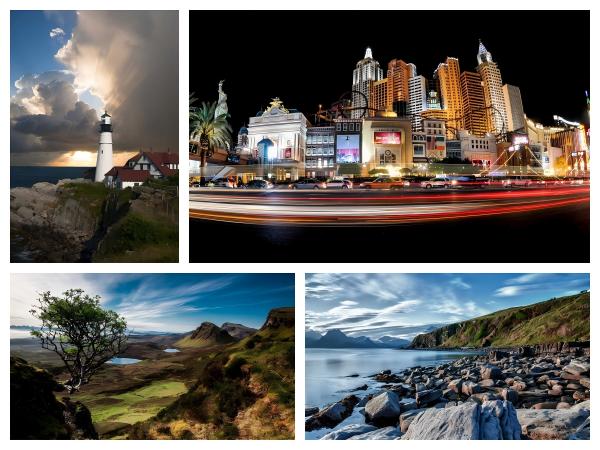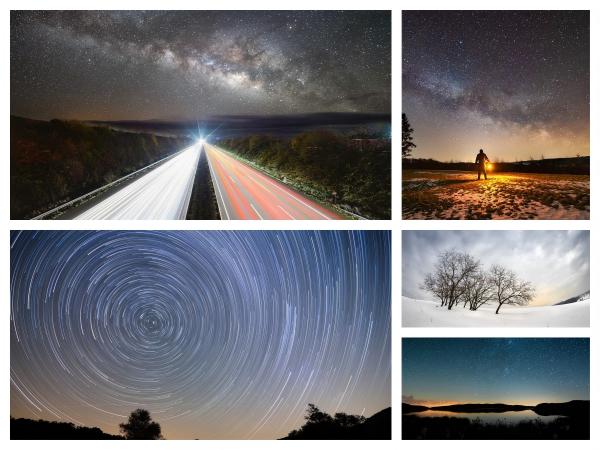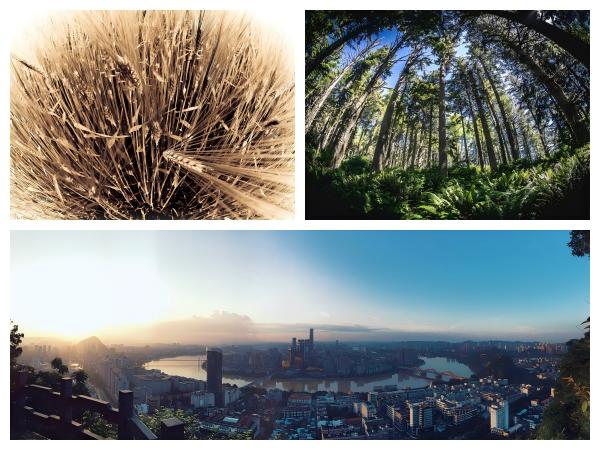As we all know, fisheye lens is an ultra-wide-angle lens with a viewing angle of more than 180 degrees, which can produce a strong distortion effect and bring a unique visual impact. In landscape photography, fisheye lens is widely used and can help photographers create works with great visual impact.
The unique applications of fisheye lenses in landscape photography include but are not limited to the following aspects:
1.Capture ultra-wide-angle panoramas
The angle of view of a fisheye lens is usually more than 180 degrees, which can fully incorporate a wide range of scenes that are difficult for the naked eye to capture at the same time, such as continuous mountains, winding rivers and the sky, and is suitable for shooting large-scale scenery, such as mountains, grasslands, beaches, etc.
In addition, in situations where space is limited, such as narrow canyons or streets, fisheye lenses can maximize the panoramic view of the environment.
2.Emphasize the relationship between foreground and background
Fisheye lenses have a unique effect when dealing with depth of field. They can exaggerate the proportions of foreground objects while compressing the background to create a strong perspective effect. Photographers can use this feature to highlight small objects or details in the foreground.
For example, they can enlarge the rocks, flowers or trees in the foreground while compressing the mountains or sky in the distance to create an interesting composition.
Fisheye lenses are good at emphasizing the relationship between foreground and background
3.Create unique distortion effects
Distortion is the most notable feature of fisheye lenses. It can turn straight lines in the picture into curved lines, creating an exaggerated visual effect.
For example, when shooting landscape elements with a sense of lines, such as rivers, roads, coastlines, etc., this distortion effect can add a sense of movement and rhythm to the picture; for some scenes with unique shapes, such as round lakes, oval valleys, etc., fisheye lenses can further exaggerate their shapes to make them more prominent and eye-catching. This unique visual impact of fisheye lenses can add an artistic sense to landscape photos.
4.Capture dramatic dynamic scenes
The ultra-wide angle of the fisheye lens can accommodate more dynamic elements, and combined with a slow shutter speed, it can enhance the blur effect, such as water atomization and cloud smear. At the same time, combined with the distortion effect of the fisheye, it can add a sense of dynamics to the picture, making the static landscape picture more visually impactful.
For example, when shooting continuous mountains, fisheye distortion can enhance the wave feeling of the ridge; before a storm, it can exaggerate the flow direction and pressure of the clouds.
Fisheye lenses can capture exaggerated dynamic scenes
5.Creativity and artistic expression
Photographers can try more novel compositions and perspectives by using fisheye lenses. By adjusting the composition and using the distortion effect, they can create surreal or dreamy images, breaking through the conventional visual experience and triggering the audience’s thinking and imagination.
For example, the sky and the ground can be integrated into the same picture in a peculiar way to create a visual experience beyond reality.
6.Astronomy and natural wonders photography
Due to its distortion characteristics, fisheye lenses are also very suitable for astronomical photography, capturing the starry sky and natural wonders.
For example, using a fisheye lens can capture a panoramic view of the entire night sky or the Milky Way, and can shoot astronomical phenomena such as star trails, meteor showers or auroras, combining the Milky Way and constellations with ground scenery to create a sense of the universe; the distortion and bending effect of the fisheye lens can also enhance the visual impact of natural wonders, such as waterfalls, volcanoes, etc.
Fisheye lenses are also suitable for photographing astronomy and natural wonders
7.Shooting in special circumstances
Fisheye lenses also have unique applications in some special environments.
For example, in underwater photography, fisheye lenses can offset the refraction and deformation of water, restore wide-angle vision, capture clear underwater images, and make underwater scenes appear more vivid and real; in environments such as mountains, deserts or polar regions, fisheye lenses can also better record the vastness and uniqueness of the environment, providing viewers with an immersive experience.
In general, the use of fisheye lenses in landscape photography provides photographers with more creative possibilities. It can help photographers present the beauty and charm of the scenery in a new way and bring a visual experience to the photos that is different from ordinary lenses.
Usage tips: Tips and precautions for using fisheye lenses
1.Pay attention to composition techniques
The fisheye lens has a very wide viewing angle and it is easy to include unnecessary elements into the picture, so careful composition is required when using it. It is recommended to highlight the subject as much as possible and simplify the background to avoid a cluttered picture.
2.Pay attention to the use of light
Fisheye lenses have obvious distortion effects, so they are sensitive to image quality at the edges of the picture. When shooting, pay attention to the use of light to avoid backlighting and dark corners.
Fisheye lens should pay attention to the use of light
3.Pay attention to controlling distortion
Although the distortion effect of fisheye lens is unique, excessive use may make the picture look unnatural, so it needs to be used reasonably in combination with the subject. For example, its edge stretching can easily destroy the balance of the picture, so pay attention to placing key straight line elements in the center of the picture, such as people, and avoid placing them at the edge.
4.Try unconventional angles
When necessary, try some unconventional angles. For example, shoot with the camera upside down so that the sky occupies the lower half of the picture, subverting the conventional perspective effect, such as “upside-down castle in the sky”.
5.Post-production correction and creative processing
Some of the distortion effects of fisheye lenses can be corrected by software, but this will sacrifice some of the viewing angle. If you need to retain the distortion and maintain a certain artistic curvature, you need to enhance its creative effect.
Final Thoughts:
If you are interested in purchasing various types of lenses for surveillance, scanning, drones, smart home, or any other use, we have what you need. Contact us today to learn more about our lenses and other accessories.
Post time: Jul-22-2025







